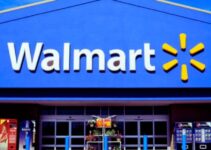Campbell Soup Company is a flagship canned soup product manufacturing American multinational corporation. Joseph A. Campbell founded the company in 1869; merger and acquisition made it the largest food processing company in the US market. Today, we’ll discuss the value chain analysis of Campbell Soup supply chain analysis; primary and supporting activities in the process of value chain analysis Example Company. They are inbound and outbound logistics, operations, marketing, and customer service; infrastructure, HRM, technology, and procurement as an application of the value chain analysis process.
Substitutes of Campbell Soup
- Pepperidge Farm
- The Kraft Heinz Company
- Blue Apron
- General Mills Inc
- Mondelez
- PepsiCo
- Nestle
- General Mills
The Value chain analysis of Campbell Soup supply chain analysis would analyze the primary and supporting activities in the process of value chain analysis. They’re inbound and outbound logistics, operations, marketing, and services; infrastructure, HRM, technology, and procurement. Here’s the supply chain analysis of Campbell Soup value chain analysis company example as follows;
Value Chain Analysis of Campbell Soup
Let’s discuss the primary and supporting activities involved in the process of value chain analysis of Campbell Soup supply chain analysis. It is an application of value chain analysis based on Porter’s model; some of the key elements and components of value chain analysis are as follows;
Primary Activities of Campbell Soup
Some of the five main primary activities in the value chain analysis of Campbell Soup supply chain analysis are as follows;
Inbound Logistics of Campbell Soup
I-Ethical & Responsible Sourcing
Campbell Soup is highly careful and cautious about ethical and responsible sourcing of ingredients and raw food supplies. While dealing with multiple suppliers in various categories, the company makes sure that they are complying with human rights standards. The company sources approximately 98% of the ingredients and raw supplies ethically and responsibly. In fact, the canned food brand has set clear guidelines and standards for sourcing suppliers; and they’re as follows;
- No child and forced labor
- No harassment and abuse
- Fair and equal treatment of workers
- Benefits and compensations
- Standard working hours
- Freedom of association and unions
- Safety and health
- Environmental laws
- Agriculture strategies
- Reporting violation
- Environmental regulation compliance
II-Diverse Suppliers
Campbell Soup deals with a wide and diverse range of suppliers and vendors from different backgrounds, ethnicities, and cultures in its supply chain network. The diverse suppliers of the canned food brand are as follows;
- Women
- Veteran
- Service disable veteran
- People with disabilities
- Native Americans
- Transgender, bisexual, gay, and lesbian
- Hispanic
- Black
- Asian Pacific
- Asian Indian
III-Supply Chain Risk Analysis
Campbell Soup has developed an alliance with the TSC (the sustainability consortium) to analyze environmental and social risks. The company collaborates with them to establish visibility of ingredients and raw supplies in its supply chain network. The sustainability risk analysis helps you to give priority to the top raw materials and ingredients, and they’re as follows;
- Wheat
- Tomatoes
- Potatoes
- Paper Packaging
- Palm oil
- Chocolates
- Chicken
- Cheese
- Cashews
- Almonds
Outbound Logistics of Campbell Soup
I-Multiple Distribution Channels
Campbell Soup employs multiple distribution and transportation channels to distribute its finished soups, snacks, and other items to almost all convenience stores, departmental stores, and grocery shops. In fact, the canned soup brand has established a very large distribution network and its soups and snacks are available in over 120 countries across the globe.
Operations of Campbell Soup
I-Production & Manufacturing Factories
Campbell Soup has established and acquired various production factories across the US and Europe for the production of sauce, soups, snacks, and other canned food items. The production and manufacturing processes and operations help the company to keep serving the needs and demands of customers on time without any disruptions.
II-Warehousing
The average shelf-life of Campbell Soups is roundabout 2 years and it gives a significant time to the retailers, stores, and distribution centers to store canned food items and snacks. Campbell Soup has established various distribution centers and they act as warehousing facilities; the company distributes snacks and canned soups to the final destinations from there.
Marketing & Sales of Campbell Soup
I-Multiple Media Channels
Campbell Soup employs various media channels for the marketing, advertisement, and marketing of its canned soups, snacks, and sauces. The targeted marketing campaign helps the company to approach the required segments of the customer market. Affordable health soups have earned significant popularity among customers.
II-Popular Slogans
Campbell Soup uses various marketing slogans to attract the attention of customers; some of them are as follows;
- “Made for real, Real Life”
- “It’s amazing what soups can do!”
- “Possibilities”
- “Never underestimate the power of soup!”
- “Soup is good food”
Services of Campbell Soup
I-Customer Focused
Campbell Soup follows the customer-focused strategy of producing healthy and affordable soups, snacks, meals, and sauces for customers. The company has a very long history of over 150 years of serving the appetite of customers. In fact, the company has become a very important part of society by offering healthy quality food and meals to the customers.
Supporting Activities of CAMPBELL SOUP
Some of the main supporting activities in the value chain analysis of Campbell Soup supply chain analysis are as follows;
Infrastructure of Campbell Soup
Campbell Soup has established a strong infrastructure of production and manufacturing factories, diverse supplier networks, distribution centers, and warehousing units. Well-developed ground infrastructure helps the canned food company to smoothly perform its various routine operations without any disruptions. The company could satisfy the appetite of customers with healthy meals and soups.
HRM of Campbell Soup
Campbell Soup has employed approximately 19000 employees to manage its global operations. The human resource management department plays a critical role in building a healthy workplace culture that focuses on promoting collaboration, innovation, and diversity. Some of the main awards that the company has received over the years are as follows;
- America’s Greatest Place for Diversity by Newsweek
- World’s Top Female-Friendly Companies by Forbes
- Barron’s 100 Most Sustainable Companies
- FMI Foundation Gold Plate Award
- Management Top 250 WSJ
Technological Development of Campbell Soup
Campbell Soup invested a significant amount of capital resources of 0.092 billion USD in 2023 on research and development. It allows the company to experiment and launch new and unique tastes in the market to attract the attention of new customers and retain the existing ones. The company has also invested in technology development in its production factories to increase efficiency and productivity.
Procurement of Campbell Soup
Campbell Soup is highly careful about sustainable sourcing and purchasing of food ingredients and raw supplies. The company deals with multiple suppliers to ensure a smooth supply of raw ingredients. However, the food brand also makes sure that its procuring suppliers are engaging in sustainable practices and complying with human rights standards.
Conclusion: Campbell Soup Value Chain Analysis Example Company | Application of Value Chain Analysis Process
After an in-depth study of the value chain analysis of Campbell Soup; we have realized that Campbell Soup is the world’s leading canned food company. If you are learning about the Campbell Soup value chain analysis example company; then you should keep in mind the abovementioned primary and supporting activities. They’re inbound and outbound logistics; operations, marketing and sales, and services; infrastructure, procurement, HRM, and technological development as an application of the value chain analysis process.
Ahsan is an accomplished researcher and has a deep insight in worldly life affairs. He goes Live 3 days a week on various social media platforms. Other than research writing, he’s a very interesting person.


